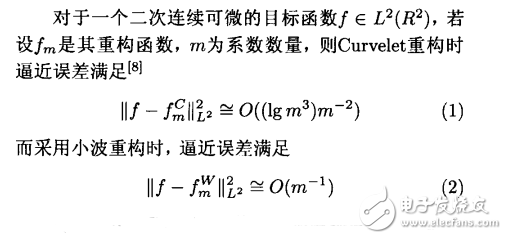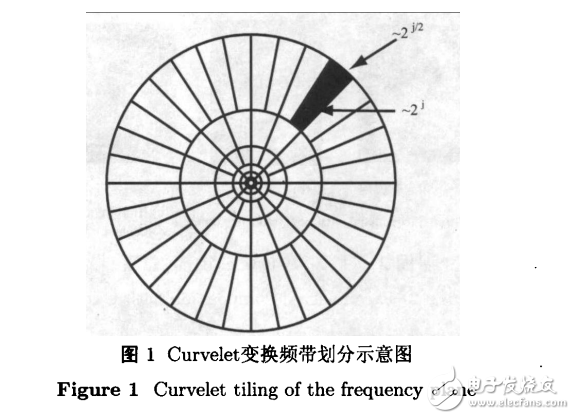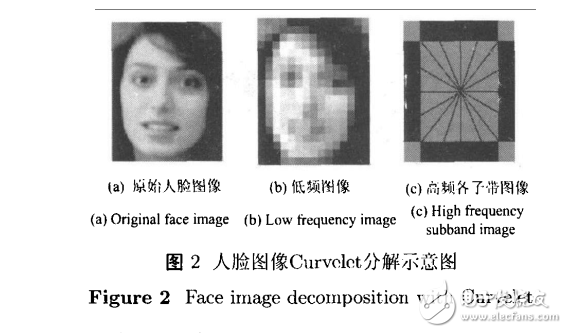Face detection is a very complicated mode. Face facial feature extraction and recognition has become a challenging topic in computer imaging related disciplines. The significance of face feature extraction and recognition based on Carvelet transform is that Curvelet inherits the excellent spatial and frequency domain local characteristics of wavelet analysis. It is another new image multi-scale analysis. Its advantage over wavelet is that it is more It is suitable for describing the geometric features of images, so it is also more suitable for face feature extraction and recognition analysis. .
The research of face recognition is an important topic in the field of pattern recognition and artificial intelligence. It has a very broad application prospect. In recent years, feature extraction has been extensively and deeply studied as a key part of face recognition system. The human face is a high-dimensional visual mode. A 100×100 grayscale image has 80,000 bits of data, which directly identifies and classifies the face image. The calculation is the largest and affects the recognition speed. Therefore, it is necessary to extract the main features of the face image. Generally, there are two requirements for face feature extraction: one is that the extracted features should have good face representation ability, strong discriminative power and discrimination; “the extracted features should be in low-dimensional space, so the features can be removed. The correlation between the two is beneficial to the design of the classifier. At present, the methods of face feature extraction mainly include: principal component analysis (PCA) linear discriminant analysis (LDA) singular value decomposition method (singular value decomposition method) decom-posiTIon, SVD), etc., PCA and LDA are the analysis methods of the second-order statistical characteristics of the base J signal, and can not eliminate the correlation between the data components from the higher order. The SVD method will deal with the loss of the entire face. Some feature information leads to a low recognition rate.
In recent years, with the gradual maturity of wavelet theory, wavelet analysis, as a kind of mathematical theory and method, has attracted more attention and attention in the field of face recognition. The reason is that wavelet transform has good time-frequency localization ability and can gradually focus. To the details of the analysis object, effectively describe the local information of the face. However, the wavelet transform reflects the point singularity of the signal. Its base is isotropy. It cannot accurately express the direction of the edge in the image, nor can it achieve sparse representation of the image. Therefore, for important facial contours and facial features of facial images, wavelets are difficult to express their characteristics, thus affecting the accuracy of recognition.
The Curvelet transform is created to overcome this limitation of wavelets. Unlike wavelet transforms, in addition to scale and displacement parameters, Curvelet adds a directional parameter to give it better direction recognition. Therefore, Curvelet's expression of geometric features such as curves and lines is better than wavelet. It is a more effective way to extract face features using Curvelet transform. In 2005, CandesEJ improved the first generation Curvelet algorithm and proposed A simpler and easier to understand fast Curvelet transform algorithm, the second generation Curvelet transform, greatly reduces data redundancy.
In this paper, a new method based on the second generation Curvelet transform face feature Curvelet decomposition for low frequency coefficient extraction and recognition is proposed, which can compress and characterize the basic features of the face well and is not sensitive to expression changes. It reflects the facial contour and facial features information of the face image. The low frequency data is further compressed and the high frequency sub-band Curvelet energy features are calculated as feature vectors characterizing the face. The simulation results of Yale face database and Orl face database show that the feature extracted by this algorithm has less dimension, faster recognition speed, higher recognition rate, and changes in face illumination, posture and expression. Both have good robustness.
2nd generation Curv elet transformation theoryCurvelet transform is a new image multi-scale geometric analysis tool whose construction idea is to approximate the curve as a straight line by a small enough block. The second generation Curvelet transform has been improved on the basis of the first generation Curvelet. The implementation process does not need to use Ridgelet, which greatly reduces the data redundancy and improves the operation speed. In the frequency domain, the Curvelet-based support interval appears as a "wedge", as shown in the shaded portion of Figure 1. This "wedge" support interval is actually a manifestation of "directionality", so the base is said to have "anisotropic". In the wedge-shaped block, only when the through-base and the singularity feature overlap, that is, Larger Curvelet coefficients when the direction matches the geometry of the singularity feature

It can be seen that the Curvelet transform smaller wave transform has better approximation ability, and can perform optimal sparse representation of the image edge, that is, the edge of the image, such as a curve. Straight line features are represented by fewer Curvelet transform coefficients, which overcomes the shortcomings of wavelet transform propagation important features to multiple scales. The energy after transformation is more concentrated, which is more conducive to extracting and analyzing important features of images.

Feature extraction of face images is a crucial part of the face recognition process. The goal is to represent the face with the least amount of features, and to require the feature quantity to maintain the distinguishability of different faces to the greatest extent.
2nd generation Curvelet face image decompositionThe second generation Curvelet decomposition is performed on the face image to obtain a low frequency subband coefficient and a high frequency subband coefficient in each direction of each scale. The low frequency coefficient can well represent the basic features of the face image. The rows and columns of the subband are respectively

Experiments show that the size of the Curvelet decomposition layer thus obtained can better meet the needs of feature extraction. It can be seen from equation (3) that the amount of low-frequency sub-band data after decomposition is significantly compressed. Suppose that for the image of 112 X 92, the number of Curvelet decomposition layers calculated by equation (4) is 4, and the low-frequency coefficient size is 19 X 15.
The high frequency coefficient reflects important information such as details and texture in all directions of the image. In theory, the number of directions in each layer is set to a multiple of 8, generally 16 for the first layer and 32 for the second layer. Figure 2 is a schematic diagram of the Curvelet decomposition, and Figure 2(a) is the original face image, Figure 2 (b) ) is a low-frequency sub-band image after the decomposition of Curvelet, and FIG. 2(c) is a high-frequency sub-band image of the 16th direction of the second layer.

Cbd Vape Products Oem,D8 Vape Pen Oem,Cbd Disposable Vape Pen Oem,China Cbd Vape Products Oem
Shenzhen MASON VAP Technology Co., Ltd. , https://www.e-cigarettefactory.com